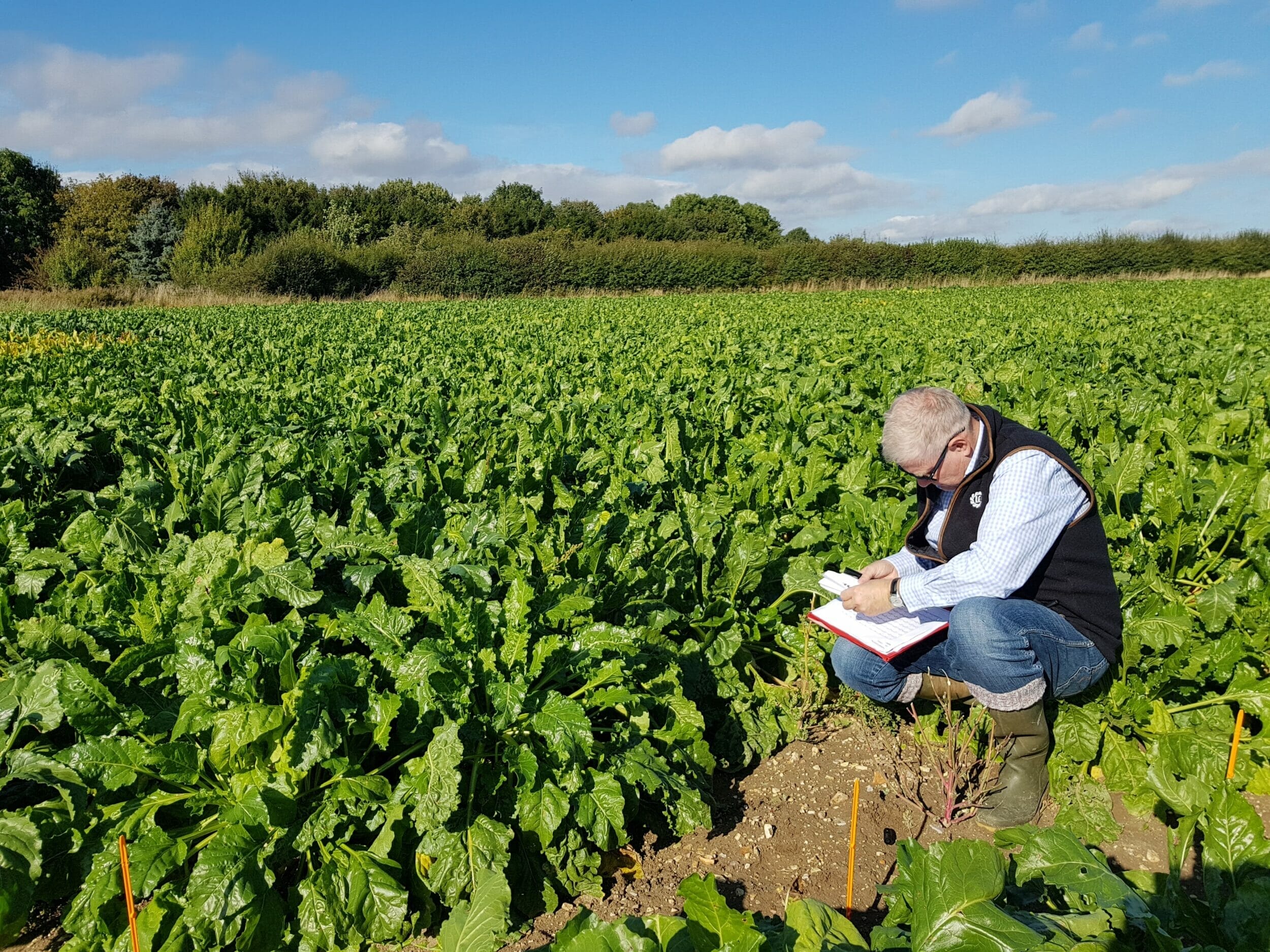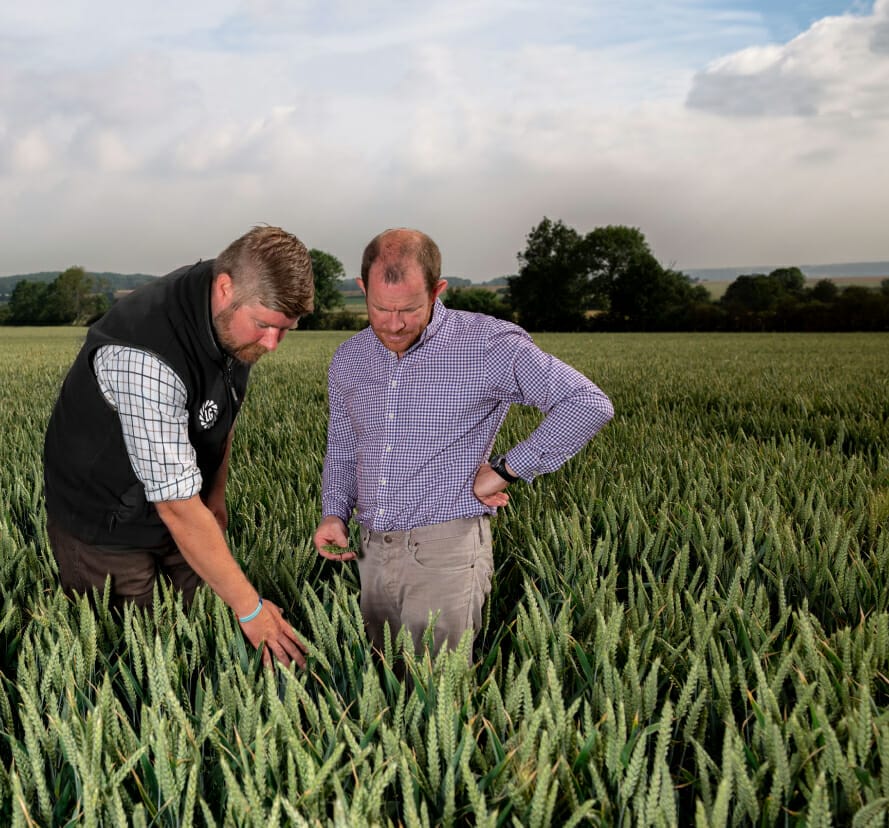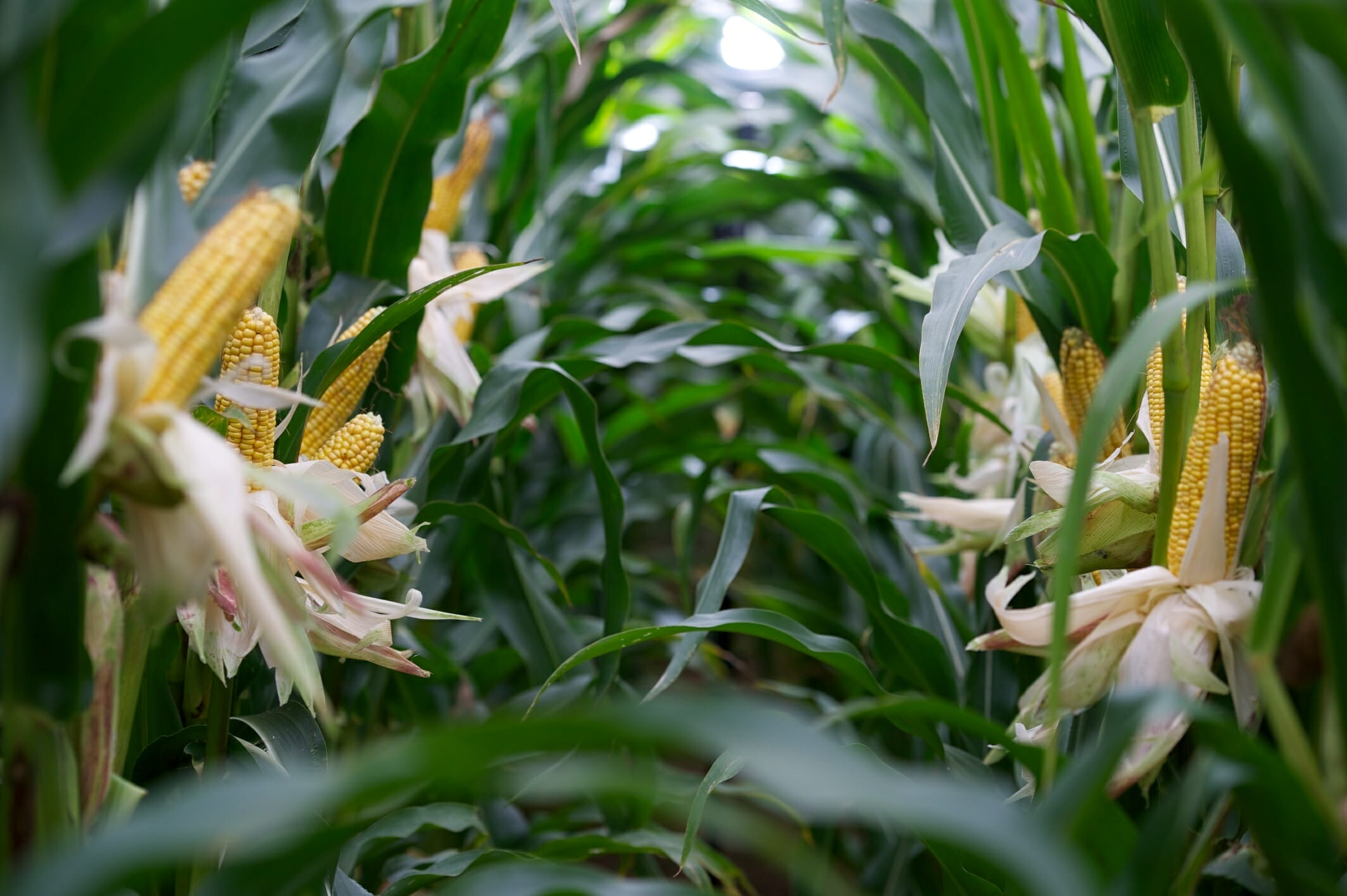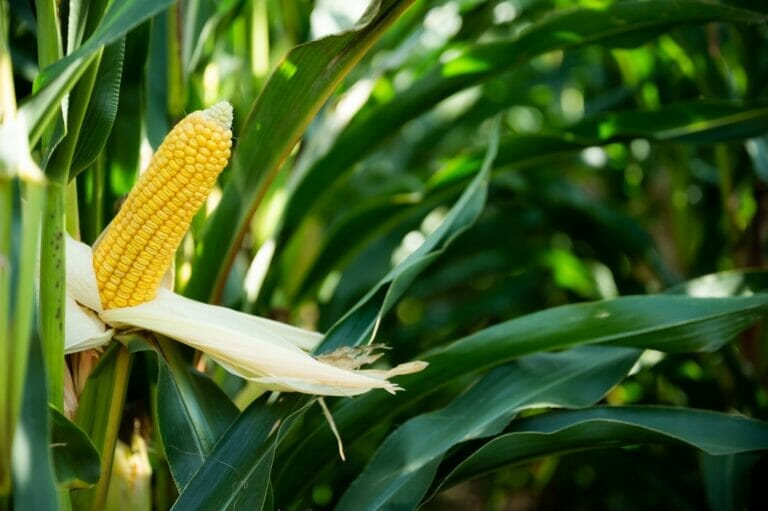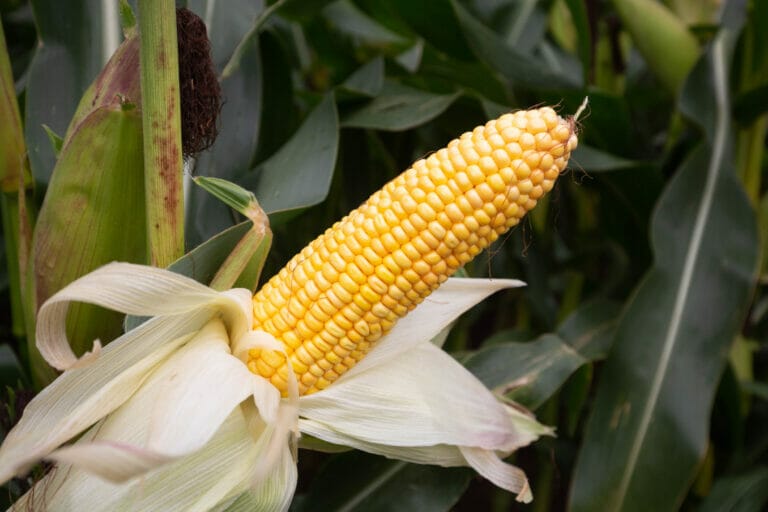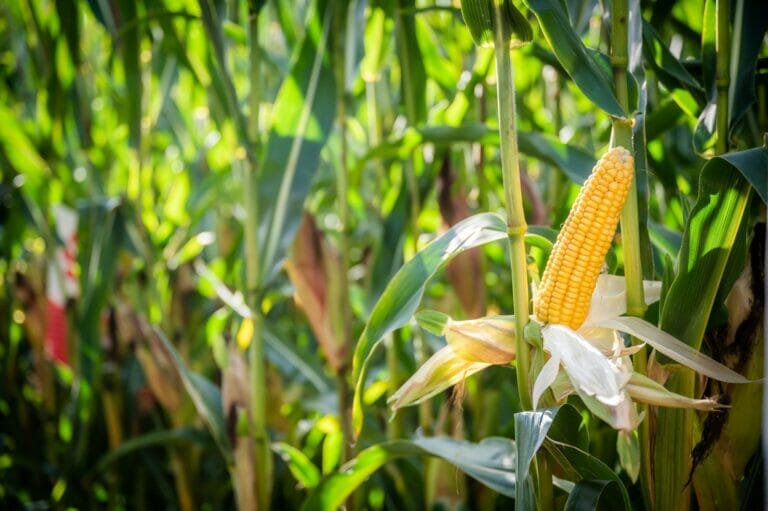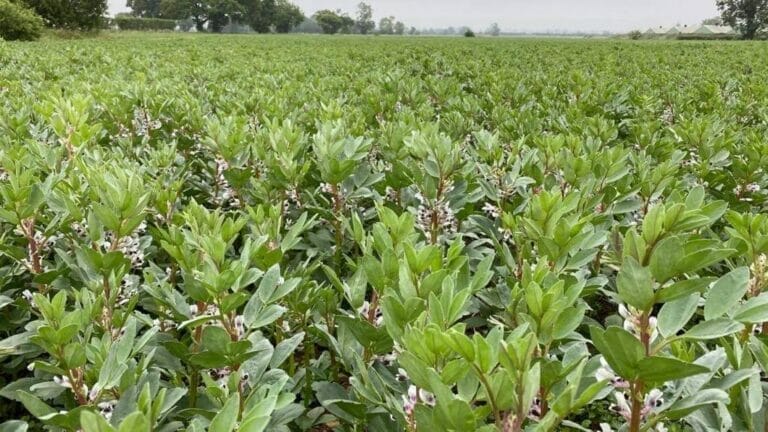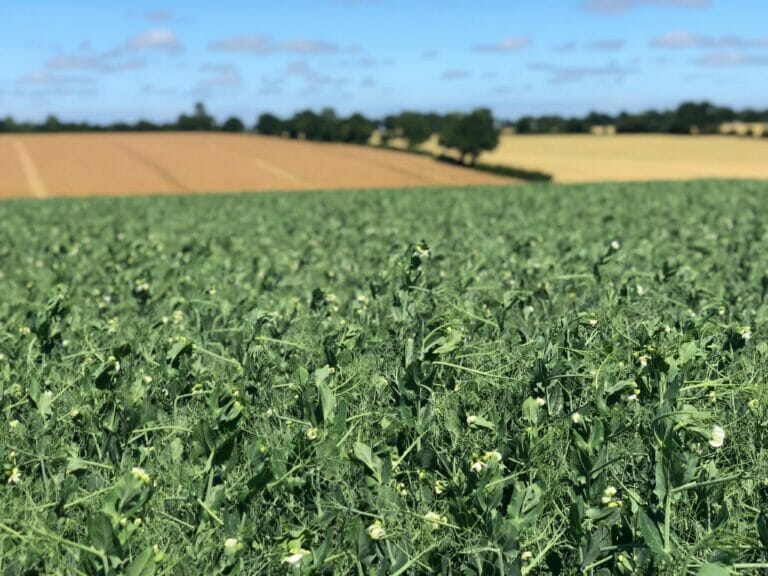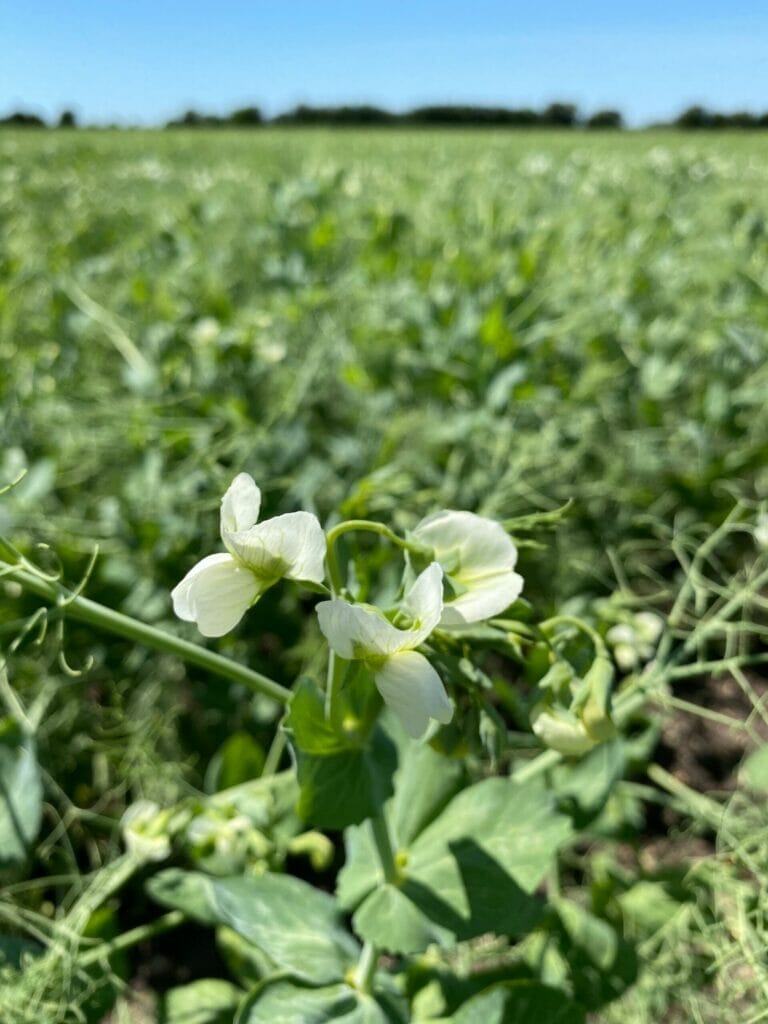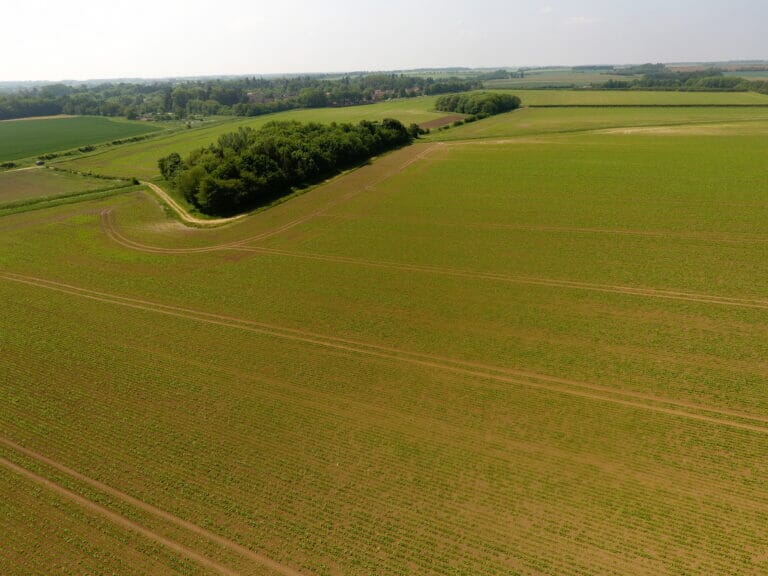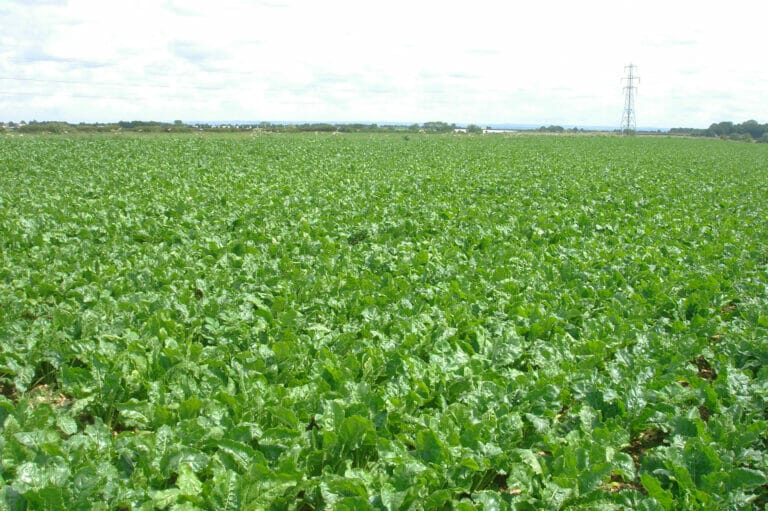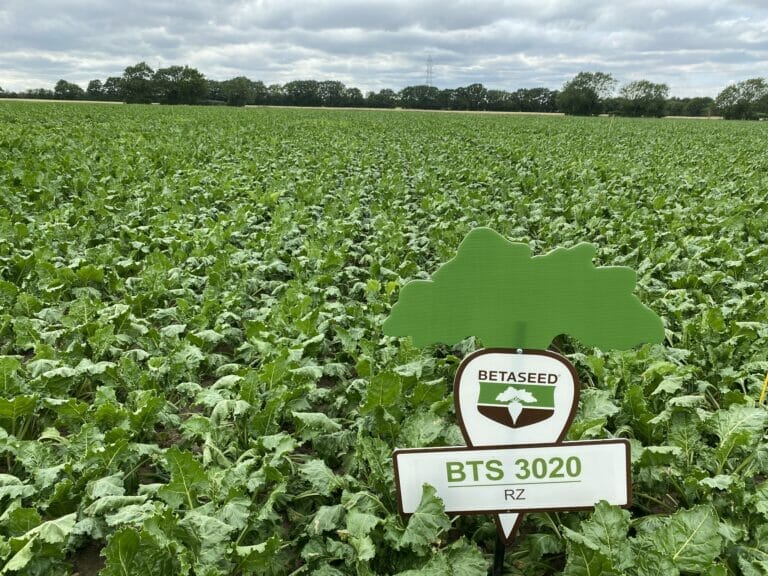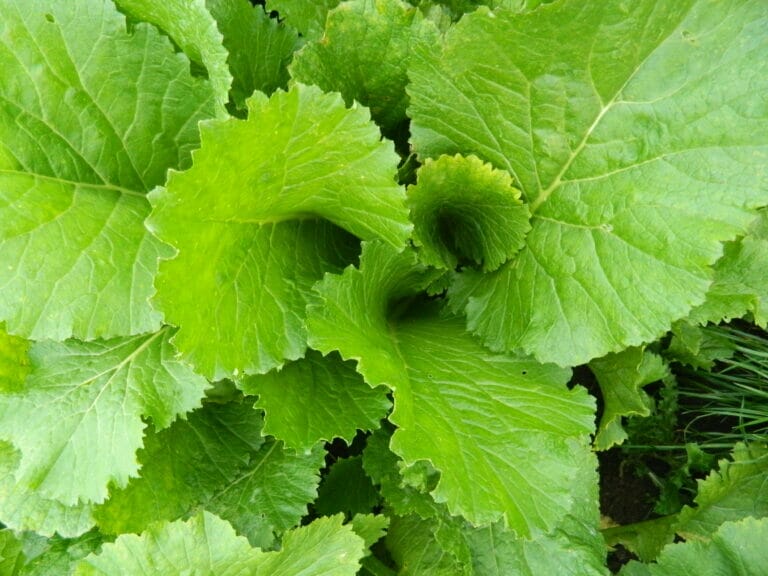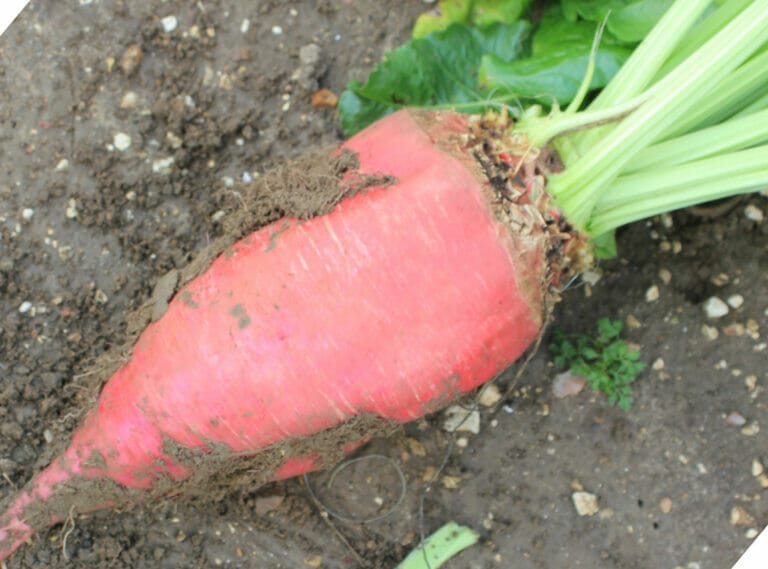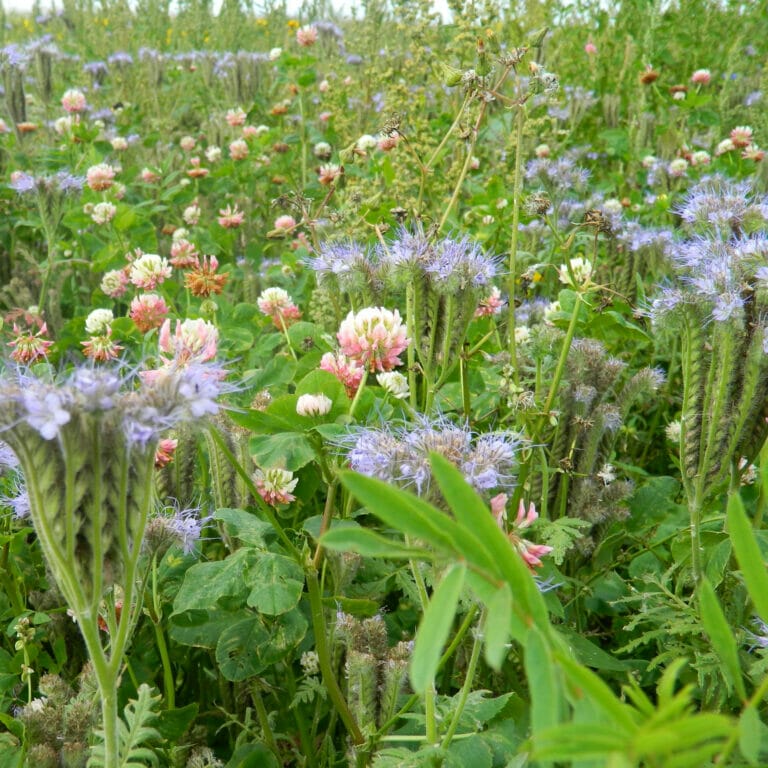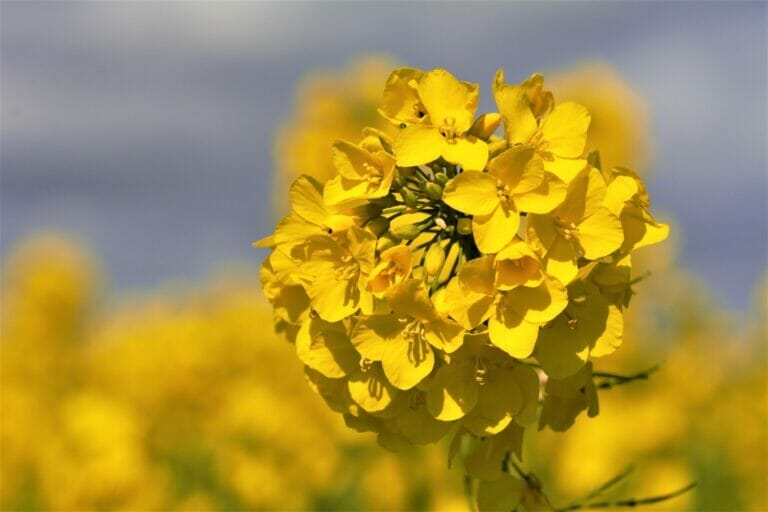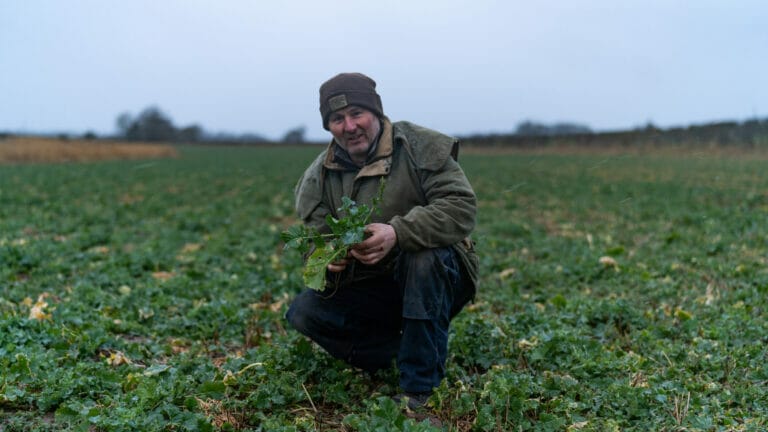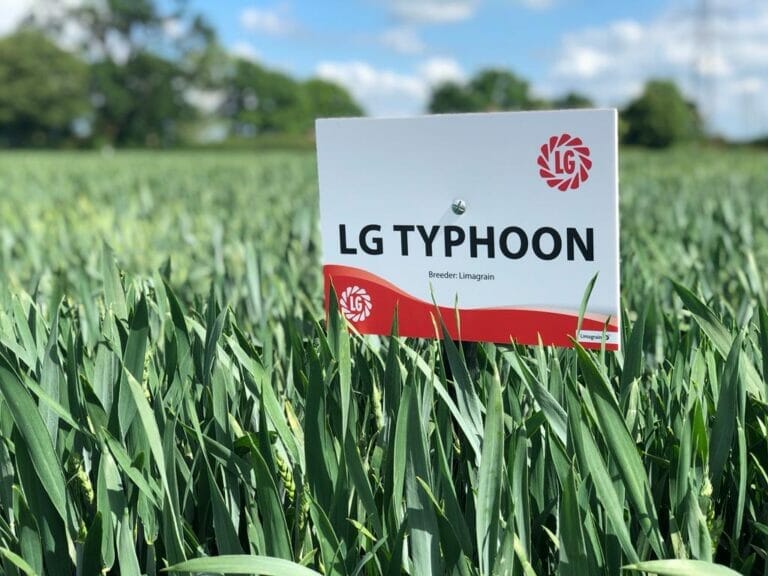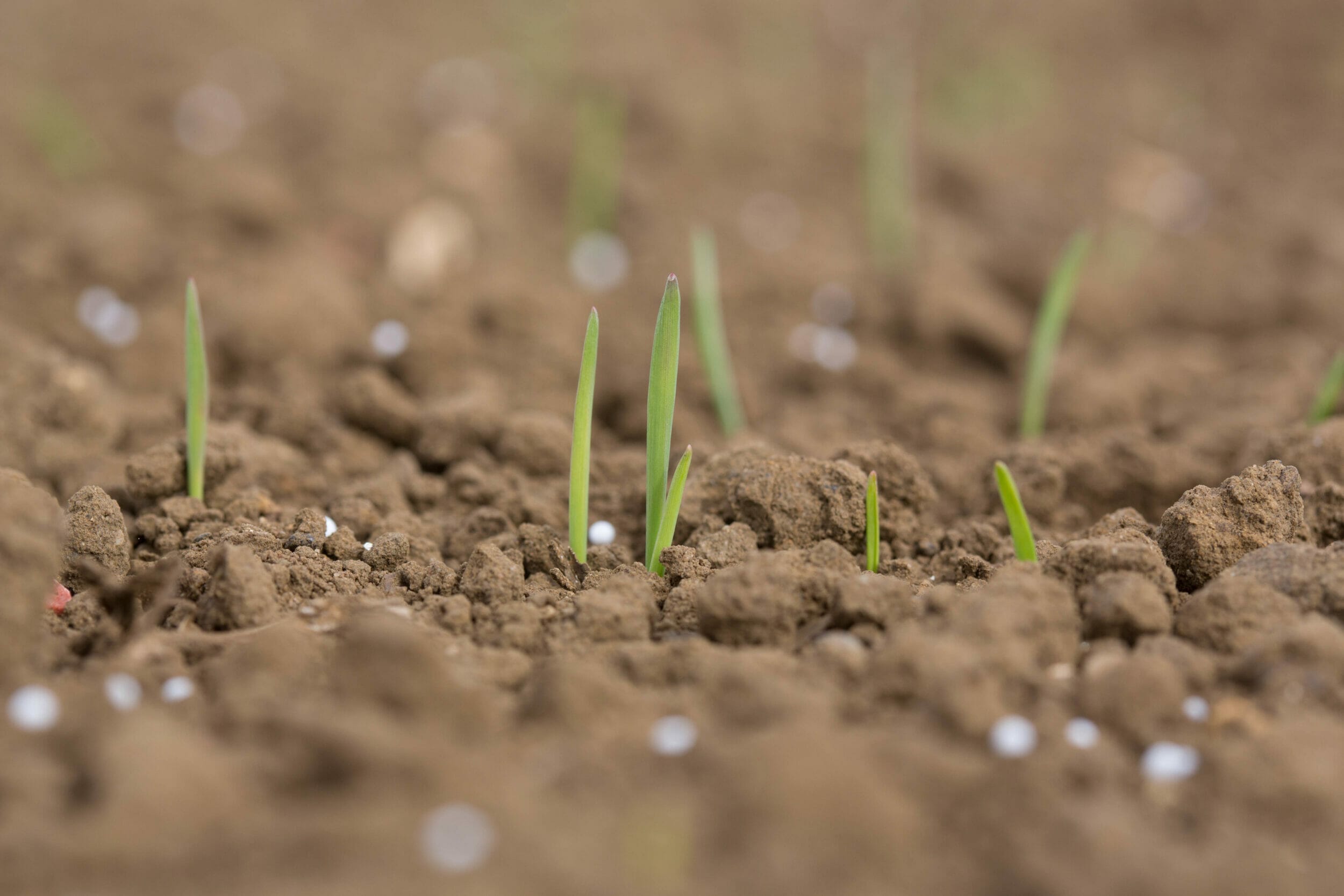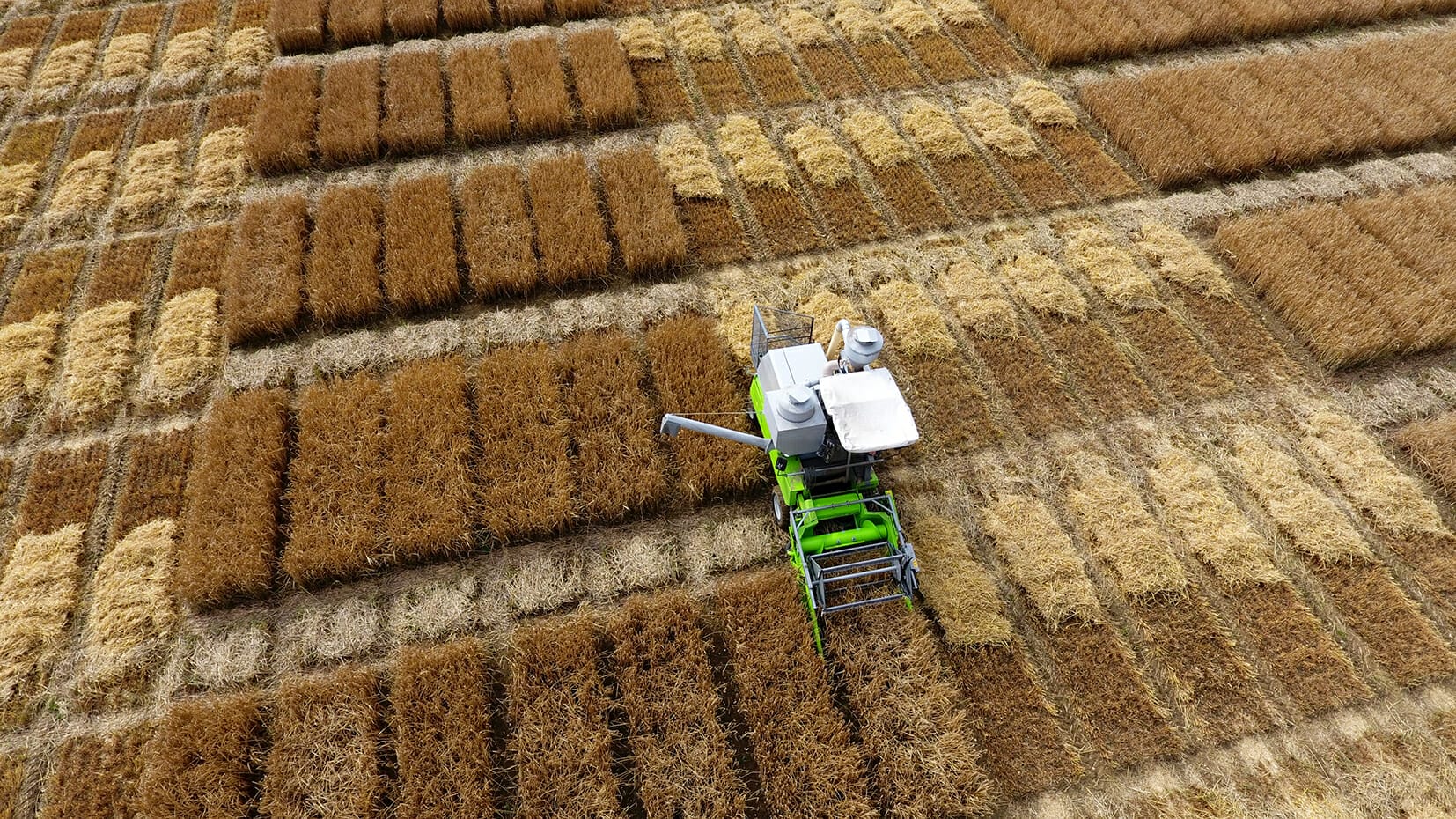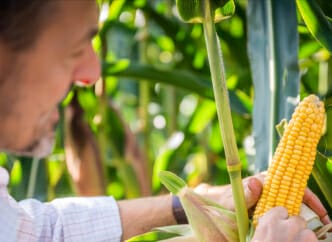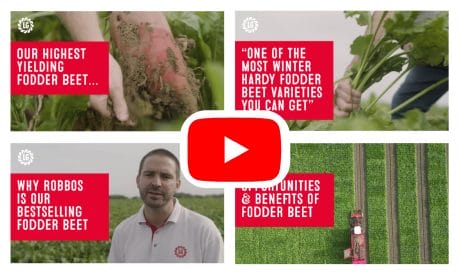Winter barley variety LG Capitol has withstood one of the wettest seasons on record as well as any winter wheat and looks full of promise heading towards harvest 2024, says Shropshire farmer & contractor, Rob Bebbington.
Fieldfare Farmers covers some 365 ha (900 acres) for a range of clients across Cheshire, Shropshire, and north Wales. It has a varied rotation, split roughly 50:50 between autumn cereals and spring cropping, including potatoes, forage maize, oilseed rape, winter wheat and winter barley.
Winter barley is grown primarily as an early entry for oilseed rape, and this year, Mr Bebbington’s whole barley area (28 ha) is down to LG Capitol, grown for the first time on the recommendation of seed supplier and grain buyer, Wynnstay.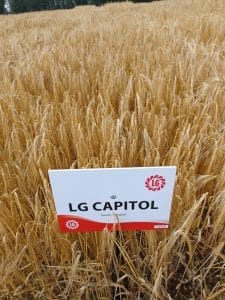
“Historically, 20 years ago, winter barley always looked a bit disappointing after a wet, cold winter, whereas with the improvements in genetics we’ve seen in recent years, now it almost seems to withstand the conditions as well as any winter wheat,” says Mr Bebbington.
“Indeed, despite one of the wettest years we’ve ever had, LG Capitol has stood up to the wet autumn and spring, and looks incredible! I can’t wait to see how it performs going into the shed this harvest.”
This year’s LG Capitol was sown on 26 September at a seed rate of 165 kg/ha, after forage maize. Land was ploughed, power harrowed and drilled in good time last autumn, allowing crops just enough time to establish before the winter set in, he says.
In total, the LG Capitol received 165 kg N/ha (applied as 26N 31SO3 and granulated urea), two fungicides based on bixafen, Fluopyram + prothioconazole and fluxapyroxad + Mefentrifluconazole, plus a mepiquat-based growth regulator, and foliar manganese.
Mr Bebbington says winter barley yields typically average around 7.6-8 t/ha (3.1-3.2 t/acre), but looking at the condition of the LG Capitol approaching harvest, he is cautiously optimistic that this year’s crop will at least match, if not exceed, that level.
The crop will be followed by oilseed rape. “We still like growing oilseed rape; it fits in well with our rotation and gives us a good spread of cropping, with winter barley providing an excellent early entry. Fingers crossed we haven’t suffered too badly with cabbage stem flea beetle.”
Looking ahead to the coming autumn, Mr Bebbington says end user requirements remain a key driver of varietal choices, so will again influence final decisions.
“But at the same time, we like LG Capitol, and don’t feel a need to change from it.”
LG Capitol
- –> Highest yielding 2-row winter barley for the east & north
- –> Yield comparable with hybrid varieties
- –> Strong disease resistance – notably brown rust, Rhynchosporium & mildew
- –> Good specific weight & screenings
Many growers are now getting to grips with the Sustainable Farming Incentive (SFI), and whilst most actions requiring a seed purchase are likely to be sown in the spring, many of the more profitable actions can also fit an autumn sowing window.
The four actions below are likely to feature in most agreements:
AHL2: Winter bird food on arable and horticultural land
AHL2 has proved to be a hugely popular action this spring, as growers have looked to make the most of the attractive payment rate (£853/Ha) and later sowing period. This action can also be autumn sown, but there are more considerations at this timing, to ensure the terms of the agreement are met. The primary aim of the action is to produce a supply of small seeds from late autumn until late winter. It may be tempting to establish a mixture this autumn, with the view to following with a spring crop next year, but an autumn sown mixture of any species is highly unlikely to produce sufficient seed in such a short time and so will not achieve this aim. Any mix sown at this time effectively needs to last 18 months, with flowering plants in the summer of 2025 that produce seed in the winter of 2025/26.
We have two mixtures well suited to autumn sowing. Magnet and Bumblebird. Magnet is an economical mix based around winter triticale and linseed, with flowering brassicas and phacelia.
Bumblebird offers more benefits with a greater range of seed-bearing species and the inclusion of legumes such as red clover, crimson clover and vetch, which will also fix nitrogen for the subsequent crop.
IPM2: Flower-rich grass margins, blocks or in-field strips
Although not quite the highest paying option, at £798/Ha, IPM2 has the potential to offer the highest net margin of any options suited to autumn drilling. The action is rotational but to maximise profitability and to ensure the aims are properly met, the chosen seed mix should ideally be down for the full three years of the agreement. Our Flower-rich margin mixture includes 15 native, UK produced wildflower species, combined with 7 species of slow growing amenity grasses, chosen to give the wildflowers the greatest chance of successful establishment.
AHL1: Pollen and nectar flower mix
AHL1 is another action with an attractive payment rate of £739/Ha.
Our Bee mix is the product to choose to meet the aims of producing areas of flowering plants from late spring and during the summer months. As well as providing food for pollinators and encouraging natural pest predators, this mix has high levels of nitrogen fixing legumes and phacelia, which is a great soil conditioner. The possible drawback of this action is that opportunities to manage any potential problem weeds are limited. Growers hoping to reduce blackgrass populations for example, will likely find the rules on grazing and cutting too restrictive to successfully manage the weed.
NUM3: Legume fallow
NUM3 has a slightly lower payment rate than the others mentioned here, at £593/Ha, but it has some key benefits that potentially make up for the lower rate. Unlike AHL2, IPM2 and AHL1, where the maximum area entered into the actions is restricted to 25% of the farm, there is no area limit with NUM3. There is also greater freedom to cut the mix, to help prevent blackgrass from seeding, making this action preferable to AHL1 in high blackgrass situations.
We have two mixture options for this action; Legume 2 or Legume 2 grass free. Both contain a similar range of legumes to fix nitrogen, improve soil health and provide food for wildlife and pollinators, but the Legume 2 contains 66% perennial ryegrass. The ryegrass within the mix helps build soil organic matter levels, but is also better able to compete with weed species and will help smother blackgrass, again helping to reduce populations. Both of these mixtures would be suitable if you choose to rotate the action each year, but the benefits to both soil and blackgrass suppression will be greater if the mix is kept down for 2 or 3 years (the duration of the agreement).
LG Beowulf Bucks the TrendLG Beowulf – the highest yielding wheat on the 2024-25 AHDB Recommended List
Ron Granger shares his views on what the variety offers and where it fits on farm:

Arable Technical Manager
When breeders cross two varieties, we know what we want to accomplish with regards to the complimentary attributes both parent varieties offer – genetically and agronomically – in the progeny.
LG Beowulf reflects this approach, as a cross between two very successful commercial varieties; (Costello x Gleam). Recently, we have seen several very high yielding wheats added to the RL, but unfortunately, although gaining commercial market share, they have not offered the all-round desirable agronomic package that many growers wish for in a perfect world.
LG Beowulf bucks the trend, offering the highest UK treated yield potential sitting at 106.2%, and one of the best agronomic packages available, combined with great flexibility within the rotation – it’s a fantastic package!
High yields are important for maximising profit, but more than this, a grower needs to know that these yields will be delivered consistently every season; and this is exactly what LG Beowulf does.
 It performs extremely well both as a first wheat and in the more testing second wheat situation and is suitable for all soil types. However, LG Beowulf should be grown on more moisture retentive soils to achieve maximum yield potential, as there are better variety ideotypes for the more testing, lighter, drought prone soil situations.
It performs extremely well both as a first wheat and in the more testing second wheat situation and is suitable for all soil types. However, LG Beowulf should be grown on more moisture retentive soils to achieve maximum yield potential, as there are better variety ideotypes for the more testing, lighter, drought prone soil situations.
LG Beowulf offers a very good disease resistance profile, especially for the key disease challenges of yellow rust (9) and Septoria tritici (6.7). The variety also delivers a very high untreated yield (91%); a consequence of its superb disease resistance in combination with its straw strength. LG Beowulf offers very good straw strength – combining a rating of 8 untreated, with an 8 rating with PGR treatments applied. Offering Orange Wheat Blossom Midge resistance is an important benefit, especially for growers in the more drought prone regions of the southeast. It’s a genetic IPM offering that should not be underestimated.
LG Beowulf can be drilled early and onwards through into the very late drilling slot, if the season dictates, giving growers a security and flexibility of drilling date, that not all varieties exhibit. The variety does have a slightly later maturity, but widening the harvest date is useful as an insurance against erratic weather patterns. Spread your risk on farm by having early maturing varieties alongside later maturing ones.
LG Beowulf has the benefit of a high specific weight combined with a high Hagberg. A high specific weight is one of the best characteristics to ensure high yield potential is maintained in erratic, seasonal weather conditions.
“There is no such thing as a perfect variety, however, LG Beowulf comes close!”
It offers a comprehensive agronomy package along with very high yield potential in the hard feed wheat sector; desirable characteristics both on-farm and for the market.
Click here to download the LG Beowulf Technical Sheet
Sclero-Flex Secures OSR YieldsLiam Wilkinson introduces Limagrain’s newest genetic trait, Sclero-flex, into its OSR breeding lines.
Sclerotinia stem rot is a significant disease of oilseed rape in the UK; and in some circumstances, can reduce yields by 50% or result in complete loss through plant death.
In spring, when soils are moist and warm (10oC+), sclerotia in the soil germinate, releasing airborne ascospores which land on OSR petals. Sclerotinia then develops as the petals fall and stick to the leaves or stems, assisted by further moisture.
The disease is fed by nutrition from the rotting petals and pollen, allowing penetration of the leaf cuticle, resulting in lesions. Then, stem lesions occur as the pathogen spreads, which reduces food and water supply to the canopy, induces premature ripening, and weakens stems to cause lodging.
Effective control of the disease relies largely on protectant fungicides that should be applied during mid-flowering before there is any significant petal fall. However, the fungicides only have a protectant role and have to be applied ahead of infection taking place.

Coretta Kloeppel – OSR Hybrid Breeder
Sclerotinia sprays can coincide when on-farm activity is high and there’s greater pressure on sprayer hours. This makes it difficult to hit those optimum timings.
Sclerotinia is the reason given for almost 30% of total fungicide use in the crop. Against this background, the weather has become less predictable.
In recognition of this increasing threat, a new breeding tool has been identified by Limagrain to help combat the disease. Known as Sclero-flex, this exciting quantitative tolerance to Sclerotinia completes the Sclerotinia control triangle, joining cultural methods and fungicidal chemistry.
Limagrain OSR varieties with the new technology, have shown an average reduction in Sclerotinia incidence of 57%, and a reduction in severity of 44%.
How does Sclero-flex work?
It’s based on tolerance rather than resistance. Sclero-flex is the collective result of many smaller genes which all demonstrate tolerance. This ensures a variety will be durable and sustainable and less likely to break down in the future.
The focus on developing new traits beyond existing scope has been coined as Limagrain’s seventh generation of hybrids – bringing varieties to the market which offer a stacked portfolio for stem health, alongside the standard pod shatter, TuYV and RLM7 resistance traits, which growers have come to expect.
LG Armada is the first seventh generation hybrid to be released, boasting the new Sclero-flex technology. It’s also the highest yielding OSR variety on the AHDB Recommended List.
Integrated Pest Management Foundations
Plant breeding remains the foundation of integrated pest management (IPM).
LG champions a ‘control triangle’ where effective disease management lies in a careful balance between cultural practices, responsible fungicide use, and refined plant genetics. This includes when combatting Sclerotinia.
Cultural control practices rely on widening the cropping rotation – so, only growing OSR once every five years, whilst being mindful of where other Sclerotinia hosts fit into the rotation. Effective weed management is also important.
As for responsible fungicide use, action starts by using relevant Sclerotinia alert tools such as that hosted by the AHDB. It’s then a case of understanding the crop’s growth cycle and not using fungicides curatively, due to them having no activity once infection has taken hold.
Breeders Perspective Q&A
Maeve O’Rourke – Junior OSR Breeder
Q. What diseases do you see as being the biggest threat to UK OSR crops in the coming seasons?

Maeve O’Rourke – Junior OSR Breeder
A. I think it’s still going to be cabbage stem flea beetle that will be our biggest challenge rather than disease.
LG has a huge selection of different varieties with robust resistance against common UK diseases, with dozens of strong varieties in the immediate pipeline, and international research behind upcoming challenges. However, fighting CSFB is a unique and hard challenge for breeders and farmers alike.
Q. How important is the UK to the European breeding programme?
A. The UK is extremely important.
Almost every parent line in the last two decades has begun at our head office in Rothwell, Lincolnshire and our trials network is so varied (from Aberdeen to Dorset and everywhere in between) that we have a great chance of spotting any future issues for disease and any stand-out varieties, not just for the UK but all of Europe.

Q. As a breeder, what is your focus for the future?
A. Focusing on different sources of resistance.
As breeders, we know we have a limited lifespan for all resistances because diseases are constantly evolving, and the changing long-term climate conditions will affect where in the UK these diseases start to occur. We are always looking to find new and novel types of resistance, even if they aren’t useful in 2024, they might be crucial in 2034.
Winter Barley Success with Sister VarietiesLimagrain sister varieties; LG Caravelle & LG Capitol, dominate the 2-row feed winter barley AHDB 2024/25 Recommended List.

Mark Ullyott
LG Caravelle performed very well last harvest on the Yorkshire Wolds, for Mark Ullyott of Langtoft Grange Farm near Driffield, and he was extremely pleased with yields between 8.5-9.5 t/ha.
“We have grown seed crops of barley for over 10 years, and LG Caravelle must be the best we have seen,” he says.
“It is always interesting growing a new variety for the first time to see how it performs, and we are very pleased with LG Caravelle and will grow it again. If we could, we would put all of our acreage down to the variety,” says Mark.
Ron comments ‘LG Capitol Backs up Successful Genetics’
“LG Capitol backs up the successful genetics of LG Caravelle, in that it is a sister line selected from the same initial cross.
LG Capitol has shown similar very high yield potential, sitting on 106% for the UK and 107% in the east, and importantly, it has shown this high consistency of performance over regions and seasons.
This trait, combined with the desirable agronomic attributes of good standing, a good disease resistance profile and good grain quality, makes it a great addition to the new RL and it will be of interest to all barley growers.”
Perfect Fit for Regen SystemA large estate in the northeast of England, has turned to wheat variety LG Typhoon as part of its drive to build a more sustainable regenerative cropping system.
The in-house farming operation of County Durham-based Raby Estates, began conversion to direct drilling in 2018 and is striving to reduce the use of artificial inputs where possible, without compromising on the quality and quantity of crops produced.
“We’re trying to move away from growing high input varieties, so are primarily looking for those that offer a robust disease package, good standing power and suitability for our direct drilling system,” according to farm manager Philip Vickers.
“Direct drilling in northern England is not something you want to be doing into November, so I also look for varieties that suit the early drilling slot. From what we’ve seen so far, LG Typhoon seems to fit our requirements well.”
Strong performance
In 2022, the farm grew around 32 ha (80 acres) of LG Typhoon, alongside several other varieties, but Mr Vickers has been so impressed with its agronomics, ease of management and yield performance, that he has increased this to 100 ha for 2023/24.
The LG Typhoon averaged an excellent 9.4-9.6 t/ha.
“Agronomy-wise, LG Typhoon was problem-free. It established quickly in the autumn, got away well in the spring, and was relatively early to harvest, tight behind Graham.”
Robust disease profile
Strong Septoria resistance is a must-have for all winter wheat varieties grown on the farm, as the disease remains the number one yield-robber in high pressure seasons.
With a Septoria rating of 7.2, backed up by a combination of genetics that are different to those in other RL varieties, LG Typhoon has a distinct advantage over others.
Perfect fit for regen systems
LG Typhoon offers attributes that make it ideally suited to strip tillage/ direct drilling, regenerative crop establishment systems, that often feature wider rows.
- –> High yielding, consistent & resilient variety, that delivers across seasons & rotations
–> A prostrate growth habit with a slower plant development through the autumn & winter months
–> High tillering variety that utilises the space from wider rows often associated with direct-drilling
–> Very good disease resistance profile reflected in its high untreated yield
–> Exceptional disease ratings for yellow rust (9) & Septoria (7.2)
–> Good standing
–> OWBM resistance
–> Excellent performance as a second wheat -
-
LG Typhoon is a high yielding, consistent & resilient variety, that delivers across seasons & rotations!
Hard feed wheats account for more than half of the UK winter wheat market, and will undoubtedly feature heavily again in many cropping plans this autumn, as growers look to bounce back from the rain-hit 2023/24 season.
Winter wheat remains the highest gross margin crop on most arable farms, with yield still regarded as being ‘king’ for maximising returns. But, achieving high yields when faced with more extreme and unpredictable weather, alongside the many other agronomic challenges, requires varieties with strong agronomics and proven, consistent, performance across multiple seasons, says Limagrain UK.
“Farmers are increasingly looking for security on-farm,” says the firm’s arable technical manager, Ron Granger. “You need a variety that delivers the right agronomics, as well as high yield.”
It is something Limagrain UK is providing, with a range of exciting new hard wheat varieties coming through its UK breeding programme, including LG Typhoon (launched two years ago), newcomer this year, LG Beowulf, and 2024 RL Candidate variety, LG Rebellion.
Genetic gains
These varieties, and two others currently in National List trials that will hopefully progress as Candidates for 2025, are the latest results of several years of ongoing breeding development, says Limagrain UK wheat breeder, Phil Tailby.
“When the UK market started shifting towards hard wheats several years ago, it took a few years for breeding programmes to adapt and new hard wheat varieties to come through. But, by using powerful breeding tools, such as marker-assisted and genomic selection, we have been able to increase selection intensity, improve selection accuracy, and reduce the time needed to develop the next generation.
“This ultimately drives faster varietal improvements, delivering the traits that growers want and need in modern wheat varieties.”
LG Typhoon for example, has an excellent disease resistance profile, especially for yellow rust (rated 9) and Septoria tritici (7.2), plus it has orange wheat blossom midge (OWBM) resistance, good specific weight, and a slow, prostrate growth habit that suits both early sowing and wide-row, direct drilling situations.
“It joined the Recommended List in 2022 with a range of agronomic attributes that are beneficial to farmers,” says Mr Granger. “These characteristics have seen it deliver excellent consistency across different seasons and regions, and suitability for the on-farm placement we have advised.”
LG Typhoon’s suitability for early drilling could be particularly pertinent this year, given the likely desire by growers to avoid a repeat of last autumn, when many drilling plans were halted by heavy rain during October onwards, he notes.
Newcomer LG Beowulf takes genetic gains on a stage further, building on its strong Costello x Gleam parentage, Mr Granger continues.
It delivers a range of desirable agronomic characteristics that make it the highest yielding variety on the RL, with proven performance across a range of situations, soil types and regions, including the North. LG Beowulf has a strong disease profile, rated 9 for yellow rust, and 6.7 for Septoria tritici, stiff straw, strong tillering, OWBM resistance, and good grain quality, particularly specific weight.
LG Beowulf has also inherited Gleam’s robustness and ability to be sown into a wide range of drilling dates and still deliver on yield, he adds.
RL Candidate variety for 2024, LG Rebellion, offers similarly impressive performance, capitalising on its KWS Extase parentage to give very high untreated yields, and an excellent disease resistance profile (notably against yellow rust and Septoria), with the additional genetics of Pch1 eyespot resistance.
LG Rebellion is also earlier maturing than KWS Extase and, unusually for a hard Group 4 variety, it has ukp export potential thanks to its excellent grain quality.
“It ticks many different boxes and gives growers the option of going for something that’s a bit different to other hard feed wheats on the market,” says Mr Granger.
Market insight

David Brown
Hard Group 4 wheats are estimated to account for around 54% of the UK wheat area, based on seed sales and farm-saved seed data, according to Openfield’s David Brown, who believes it will remain a key sector for UK growers.
While many hard Group 4 wheats go into animal feed production, in some years, there is a potential milling premium available – typically worth £2-5/t over the feed price – for crops of sufficient quality to be blended into the grist with other high-protein grade varieties, he says.
Milling demand and specifications for hard wheats do vary season-by-season, but users typically require 10.7% protein, 180 Hagberg, and 74 kg/hl specific weight, although these thresholds can be down to 10.2%, 130 and 74 kg/hl, depending on the season and overall crop quality, he says.
“Milling demand and hard wheat specifications are usually made in September, once millers know the quality profile for EU and UK crops.
“The UK is currently trading at import parity for full-spec Group 1 milling wheat and if millers continue to import, we could see more opportunity for UK hard wheat going into the grist.”
Much will depend on the size and quality of crops in the UK and elsewhere, which at the time of writing, remains uncertain given the challenging weather across much of Europe, Mr Brown says.
“With a reduced wheat area in the ground for this harvest – estimated at around 1.4 million ha – a much lower UK crop is widely anticipated, although estimates vary as to how much it will be down. The crop in the ground to be harvested in August 2024 could be between 9 and 11 million tonnes, which is comparable with 2020, and to put this into context, crop 2022 was 15.5 million tonnes and crop 2023 is circa 14 million tonnes,” he says.
Potentially, that could help support markets, but with a lower crop, the UK will be more reliant on imports, which is therefore likely to cap domestic prices, he adds.
“The UK will continue to follow global markets. These did move slightly higher during May, but all eyes remain fixed on the new crop and how that will be impacted by the weather around the world, and other events (e.g. the wars in Ukraine and the Middle East), over the coming months.”
New LG hard wheats: key attributes
|
LG Rebellion (Candidate 2024) |
||
|
Agronomic characteristics for securing consistent yield performance over multiple seasons and regions on farm |
The highest yielding variety, offering high yield potential in all regions, including the North |
High yield potential combined with the desirable agronomic characteristics of KWS Extase |
|
Prostrate growth with high tillering capacity suits early drilling, direct-drill regen situations |
Wide drilling window and suitability for a range of situations (1st vs 2nd wheat), and differing soil types |
Agronomics suit the main October and later drilling dates on farm. Very high untreated yield (97) reflects strong all-round disease profile |
|
Excellent disease resistance (especially Septoria and yellow rust) – high untreated yield, OWBM resistance |
Excellent disease profile (especially yellow rust and Septoria), OWBM resistance, and tall, stiff straw |
Excellent disease resistance profile – similar to KWS Extase, plus Pch1 eyespot resistance |
|
+2 maturity versus Skyfall |
Similar maturity to LG Typhoon |
Earlier maturing (-2 vs Skyfall) |
|
Good specific weight |
Excellent grain quality, combining a high Hagberg and specific weight |
Excellent grain quality, plus ukp export potential |
Plant breeders Limagrain UK will showcase their impressive portfolio of varieties across crop sectors at Cereals 2024.
After several years absence from Cereals, the breeders have returned to the Event on the back of their resounding success on the 2024/2025 AHDB Recommended List.
“Producing the highest yielding varieties, backed up with desirable agronomic characteristics is an exceptional achievement for any breeder. What’s more, these varieties have proven to be robust and consistent performers across seasons and regions,” explains Ron Granger, Limagrain’s arable technical manager.
 Visit stand 606 to find out more about the highest yielding winter wheat LG Beowulf, LG Caravelle the highest yielding 2-row winter barley and the highest gross output oilseed rape varieties LG Armada, LG Adeline and LG Academic.
Visit stand 606 to find out more about the highest yielding winter wheat LG Beowulf, LG Caravelle the highest yielding 2-row winter barley and the highest gross output oilseed rape varieties LG Armada, LG Adeline and LG Academic.
There will also be experts on hand to discuss Limagrain’s very diverse portfolio, including maize, forage crops and SFI options as well as an opportunity to enter a prize draw to win free seed.
“We are here to listen and share our expertise on how to get the very best out of Limagrain genetics, and the Cereals Event gives us the opportunity to do this directly with the farming community we serve,” he says.
Visit LG on stand 606, buy tickets here
Don’t forget about Fodder Beet!With feed costs continuing to rise, why not consider growing a crop of Fodder beet?
Yielding between 80-100 tonnes of fresh feed per hectare, growing a crop can help reduce your winter feed purchases. It’s not too late to drill, early crops are usually drilled early April but this year’s weather means many crops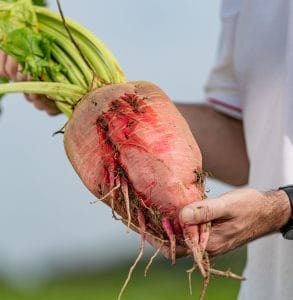 won’t be drilled until end of the month or even into the first week of May.
won’t be drilled until end of the month or even into the first week of May.
Later drilling may also help reduce bolter numbers. You should try to drill 100 – 110,000 seeds per hectare, with a view to establish 80 – 100,000 plants per hectare at harvest. Drill widths range from 45-50 cm with seed spacings of 15-20cm. Seedbed conditions are vitally important, with a requirement for a fine, firm seedbed with a soil temperature above 5˚ C.
With rotational options limited in some regions, Fodder beet will allow you to drill barley, or a grass reseed in the spring and also help fill any feed gaps that may have appeared this spring.
CHECK OUT OUR BRAND NEW FODDER BEET VIDEOS OVER ON OUR YOUTUBE CHANNEL
Under-sowing Maize Pays Dividends
Under-sowing maize with a hybrid ryegrass and red clover ley has delivered multiple benefits for Cornish dairy farmer Chris Sampson.
With five years of the practice under his belt, and now owning his own inter-row drill, Chris is seeing consistent results, and can list extra forage, increased soil carbon and reduced cultivations amongst the key advantages.
Chris is also eligible for a countryside stewardship payment of £172/ha for what is effectively a cover crop, and all of this is achieved with no detriment to his primary goal of growing a high energy maize crop.
“We grow around 40 acres of maize each year, which makes up about half of the winter forage ration for the milking herd,” Chris explains. “We now routinely under-sow it with a grass and clover mix, with the additional stewardship payment more or less paying for the seed. And, with the extra first cut of grass and clover silage we take the following spring, I’d say the whole exercise pays for itself in the first year.”
Maize was first grown at Metha Farm, near Newquay, around 25 years ago, and is now a mainstay of the milking ration for the 112-cow herd of Holstein Friesians. It is grown in rotation with grass and clover leys, with Chris favouring very early varieties that will produce a mature, high-energy crop in a relatively short growing season.
“We’ve tried growing wholecrop cereals as an alternative to maize, but could never achieve the same level of yield,” he adds. “It’s about maximising the energy production and the best measure of that is megajoules per hectare. With the system we now have, we’re able to exploit the full benefits of high energy maize whilst overcoming any environmental concerns with the crop.”
Grass and clover leys at Metha Farm are typically down for three or four years before that land is used for maize. The policy is usually to take a first cut from the old ley in early May before applying farmyard manure and then preparing the ground to drill maize.
“Our oldest leys are often still quite productive, and we’ll top-dress with nitrogen before taking a first cut,” explains Chris. “Once that crop is off, we have a fairly tight turn around to spray off the aftermath and apply muck before ploughing and preparing a seedbed.
“We find the right time to drill maize is at the end of May, or even the first week of June. We’ve tried drilling earlier but it’s usually better to wait until soil temperatures are higher. Even with the relatively late drilling we usually have a crop that hits the target of ‘knee high by the fourth of July’.”
Chris routinely soil samples all of the land going into maize, with the results determining his fertiliser policy for the crop. He may use up to 50kg/acre of DAP in the seedbed, and low level applications of nitrogen and/or MAP, or may decide there’s no requirement at all, adhering strictly to a principle of only applying what is necessary.
Once weeds have been sprayed off, and with the maize crop up to 12 inches high, Chris goes in with his Weaving inter-row drill, sowing a hybrid ryegrass and red clover mix at a regular seed rate of 14kg/acre.
“It’s a disc drill system and the coulters can be set to drill between the rows of maize,” says Chris. “The mix of hybrid ryegrass and red clover works best for our situation. The establishment is effective, so when the maize comes off in the autumn there’s a wispy crop growing underneath that kicks on very quickly.”
The priority for Chris is a mature crop of maize, so he resists the pressures to cut earlier and waits until the cobs are fit. In 2023 the maize came off on 8th October, with an overall fresh weight yield of around 17.5 tonnes/acre at 35.8% dry matter. With winter feeding well underway, the maize was feeding well, contributing a significant proportion to the total mixed ration for cows averaging 7,500 litres per lactation.
THE BENEFITS OF UNDERSOWING MAIZE
With undersowing becoming increasingly popular, Limagrain Maize Sales Manager, Tim Richmond, explains some of the wide-ranging benefits the practice has to offer.
The principal benefit of undersowing maize with a secondary crop such as ryegrass, clover, or vetch, or a combination of all three, is that it prevents maize stubbles from sitting bare over the winter. This not only reduces nutrient losses and soil erosion caused by run-off, but also makes travelling at harvest and in the subsequent spring easier, with the secondary crop helping to improve and bind soil structure.
The undersown crop also provides a valuable winter or spring crop for livestock to graze as well as providing a home for slurry to be spread in the early spring.
Undersowing also helps to improve soil biology, with worm counts typically 6-7 times higher compared to bare maize stubbles.
The secondary crop will also provide competition against spring germinating weeds, and, if conditions turn too wet to drill the next year’s crop, the land will still have a useful grass crop instead of sitting bare for a second winter.
Maize varieties such as Gema, Dignity, Saxon and Skipper are ideally suited for undersowing as they are early maturing which allows the cover crop to become further established after an early maize harvest, yet still go on to deliver a yield on par with the top performing varieties.
To achieve the best levels of cover crop establishment, the secondary crop should be drilled at a rate of around 15kg/ha (depending on the species and mixture) when the maize is at the 4-5 leaf stage. Avoid drilling the cover crop too late as an overly developed maize canopy will prevent the secondary crop from establishing properly, and ensure a gap of 15cm is left between the cover crop and maize drill rows to prevent any detrimental competition effect on maize yields.
Integrated Pest Management (IPM)The launch of the Sustainable Farming Incentive (SFI) in 2022 and the subsequent options added in 2023, allows farmers to adopt and maintain sustainable farming practices that will help improve our environment.
You can apply for a 3-year SFI agreement to undertake environmental land management actions that will help you to manage your land in a sustainable way. There are 6 SFI actions to choose from, and some work in conjunction with existing Countryside Stewardship.
As SFI is so comprehensive and detailed, in this edition, we will focus on ‘Integrated Pest Management’.
IPM is focused on:
- – Increasing knowledge and identifying opportunities for integrated pest management
- – Creating habitats for natural crop pest predators
- – Using companion cropping to suppress weeds, reduce diseases and provide protection from crop pests
- – Minimising use of insecticides
|
Actions & payments for IPM |
|||
|
IPM1 |
Assess integrated pest management and produce a plan |
£989 per year |
|
|
IPM2 |
Sow flower-rich grass margins, blocks, or in-field strips |
£673 per hectare |
|
|
IPM3 |
Use a companion crop on arable land |
£55 per hectare |
|
|
IPM4 |
No use of insecticide on arable crops and permanent crops |
||
If you decide to apply for one of these actions, it should help you with managing crop pests, diseases and weed control, and minimise the use of pesticides – leading to increased biodiversity and improvements to water quality, soil and air quality.
To maximise your sustainable farming options, we have designed seed mixtures that are eligible for IPM actions:
IPM2 – Flower-rich margin seed mixture, containing 80% grasses and 20% native UK wildflowers. Ideal for blocks or in-field strips; the mixture, once established will provide habitat and food for predators and pollinators.
IPM3 – Our Grass and clover mixture can be under sown with cereals and our Maize grass mixture can be used to under sow a maize crop, providing an understory habitat.
We suggest, before you decide which SFI action suits your business, that you check out the application process, rules, and payments at:
Sustainable Farming Incentive guidance – GOV.UK (www.gov.uk)
Delivering success for growersThe Limagrain UK portfolio of Betaseed varieties, continues to offer a diverse range of varieties for consideration, on the new 2024 Recommended List.
The portfolio offers a range of varieties suitable for the key demands of specific requirements or situations – yield/ sugar %/ disease resistance/ bolting tolerance, and now ALS herbicide resistance.
Betaseed varieties are proven both in trials and more importantly through consistent performance over very erratic and challenging seasons of drought and virus.
Based on this success, the varieties are now a well-recognised brand in the UK sugar beet sector, delivering growers security of performance through excellent genetics.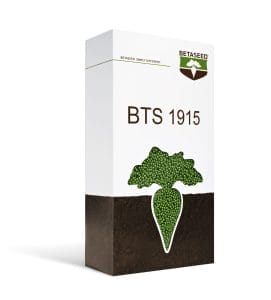
UltiPro Seed Treatment
Betaseed’s unique seed treatment, UltiPro, is designed to help sugar beet growers maximise their yields and profitability, by improving the health and performance of their crops.
By protecting the seed and promoting early plant development, UltiPro can help growers establish a strong, healthy stand of sugar beets, that can withstand environmental stresses and produce a high-quality crop.
UltiPro has been independently tested for 3 years in comparison to the UK market standard.

